Finding the right product to sell on Amazon is the cornerstone of success for any e-commerce entrepreneur. The marketplace is highly competitive, and thorough product research can be the difference between launching a bestseller and a product that struggles to sell. Here’s an Amazon Product Research Checklist to guide you through the process:
1. Define Your Niche and Goals
Before diving into the research, clearly outline your niche and business goals:
- Target Audience: Identify your ideal customer profile based on demographics, preferences, and pain points.
- Revenue Goals: Establish specific, measurable revenue targets for the next 3, 6, and 12 months.
- Budget: Define your budget for inventory, marketing, shipping, and unforeseen costs.
- Niche Selection: Choose a niche you are passionate about or one with proven market potential.
2. Analyze Market Trends
Identifying market trends is crucial to uncovering high-demand opportunities:
- Google Trends: Use Google Trends to monitor demand spikes and seasonality.
- Amazon Insights: Explore Amazon’s Best Sellers, Movers & Shakers, and Hot New Releases sections.
- Social Media: Analyze trending products on platforms like TikTok, Instagram, and Pinterest.
- Industry Reports: Review e-commerce industry reports for insights into emerging categories.
3. Set Product Criteria
Establish clear criteria to streamline your product selection process:
- Demand: Look for products with a consistent sales volume of 300+ units/month.
- Competition: Analyze competitors to identify niches with low to medium competition.
- Profit Margins: Target a minimum profit margin of 30% after fees and costs.
- Price Point: Focus on products priced between $15 and $50 for better conversion rates.
- Size & Weight: Opt for small, lightweight products to minimize shipping and storage fees.
- Durability: Avoid fragile items to reduce returns and bad reviews.
- Non-Seasonal Demand: Prioritize products with year-round appeal to ensure steady sales.
4. Conduct Keyword Research
Understand what your customers are searching for:
- Tools: Leverage tools like Helium 10, Jungle Scout, and AMZScout.
- Search Volume: Identify high-traffic keywords with low competition.
- Long-Tail Keywords: Use specific phrases (e.g., “stainless steel insulated water bottle”) for niche traffic.
- Trending Keywords: Track seasonal keywords and emerging trends.
5. Evaluate Competitor Listings
Learn from successful competitors and find areas for improvement:
- Listing Analysis: Study titles, bullet points, descriptions, and images.
- Customer Feedback: Examine reviews to identify common complaints and areas to differentiate.
- Pricing Strategies: Evaluate pricing trends in your niche to determine your competitive edge.
- Keyword Indexing: Use tools to identify the keywords competitors rank for.
6. Calculate Profitability
Ensuring financial viability is critical to success:
- Revenue Calculator: Use Amazon’s FBA Revenue Calculator.
-
Costs to Include:
- Manufacturing
- Shipping (including duties for international suppliers)
- Packaging
- Amazon fees (referral and FBA fees)
- Advertising (PPC, influencer campaigns)
- Profit Benchmark: Aim for a minimum net profit margin of 25-30% per unit.
7. Source Reliable Suppliers
Partnering with trustworthy suppliers is key to delivering quality products:
- Platforms: Use Alibaba, ThomasNet, or Global Sources.
- Sample Testing: Request product samples and rigorously test them.
- MOQ Flexibility: Negotiate minimum order quantities that align with your budget.
- Supplier Vetting: Check reviews, certifications, and factory audits for credibility.
- Backup Options: Always have alternative suppliers to mitigate risks.
8. Validate Market Demand
Test your product idea before committing to a large inventory:
- Small Batch Launch: Start with a limited inventory to gauge interest.
- Pre-Orders: Use crowdfunding platforms like Kickstarter or Indiegogo to validate demand.
- PPC Campaigns: Run ads targeting key keywords to measure conversion rates and search volume.
9. Adhere to Amazon’s Policies
Stay compliant with Amazon’s regulations to avoid issues:
- Restricted Products: Review Amazon’s Restricted Products List.
- FBA Requirements: Understand guidelines for packaging, labeling, and shipping.
- Intellectual Property: Ensure your product does not infringe on trademarks or patents.
- Product Safety: Confirm certifications for safety standards if applicable (e.g., FDA, CE).
10. Plan Product Differentiation
Stand out from competitors with unique value propositions:
- Feature Improvements: Address pain points found in competitor reviews.
- Enhanced Packaging: Invest in eco-friendly, high-quality, or branded packaging.
- Bundling: Offer complementary products to increase perceived value.
- Customization: Explore opportunities for personalization or unique designs.
11. Optimize Product Listings
A well-optimized listing drives higher conversions:
- Title: Include primary keywords and highlight unique selling points.
- Bullet Points: Focus on benefits, backed by features (e.g., “lightweight design for easy portability”).
- Images: Use high-resolution images showcasing your product’s features, benefits, and use cases.
- A+ Content: Leverage Amazon’s Enhanced Brand Content for storytelling and better visuals.
- Pricing: Experiment with competitive pricing strategies, including discounts or bundles.
12. Monitor Key Metrics
Regularly track performance to make data-driven decisions:
-
KPIs to Monitor:
- Conversion rates
- PPC performance
- Organic rankings
- Customer reviews
- Tools: Use Sellics, SellerApp, or Amazon’s analytics dashboard.
- Optimization: Continuously refine your keywords, images, and descriptions based on analytics.
13. Scale and Expand
Grow your business with strategic scaling:
- New Products: Add complementary or upsell products to your portfolio.
- International Markets: Utilize Amazon’s Global Selling Program to expand to new regions.
- Marketing: Reinvest profits into advanced advertising, influencer campaigns, and brand building.
Final Thoughts
Effective product research is the foundation of any successful Amazon business. By meticulously following this checklist, leveraging analytics tools, and staying adaptable, you can identify and launch winning products. Remember, success on Amazon requires persistence, attention to detail, and continuous improvement.





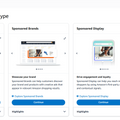



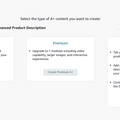




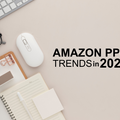





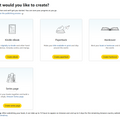










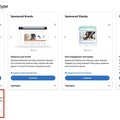















Comments
Leave a comment